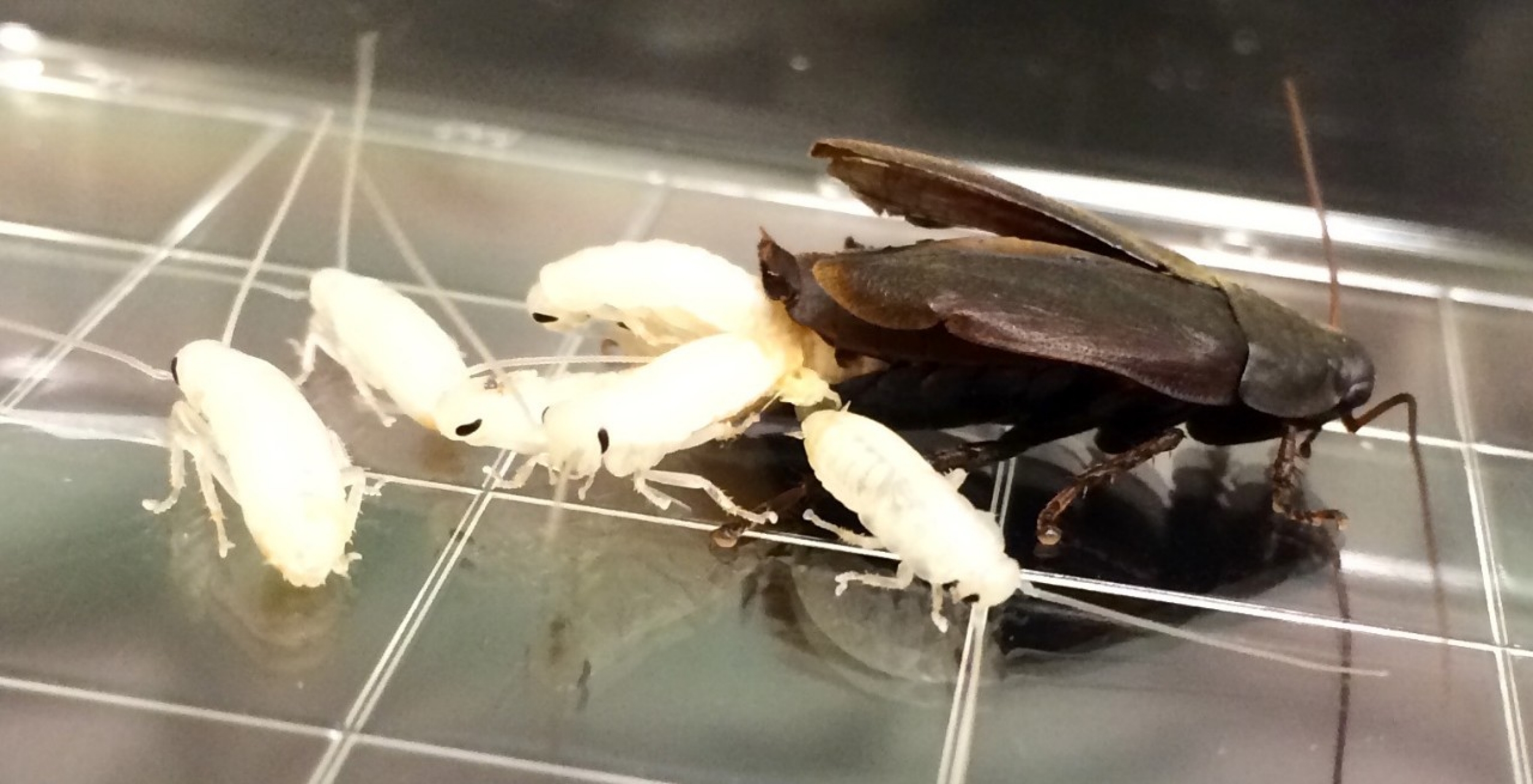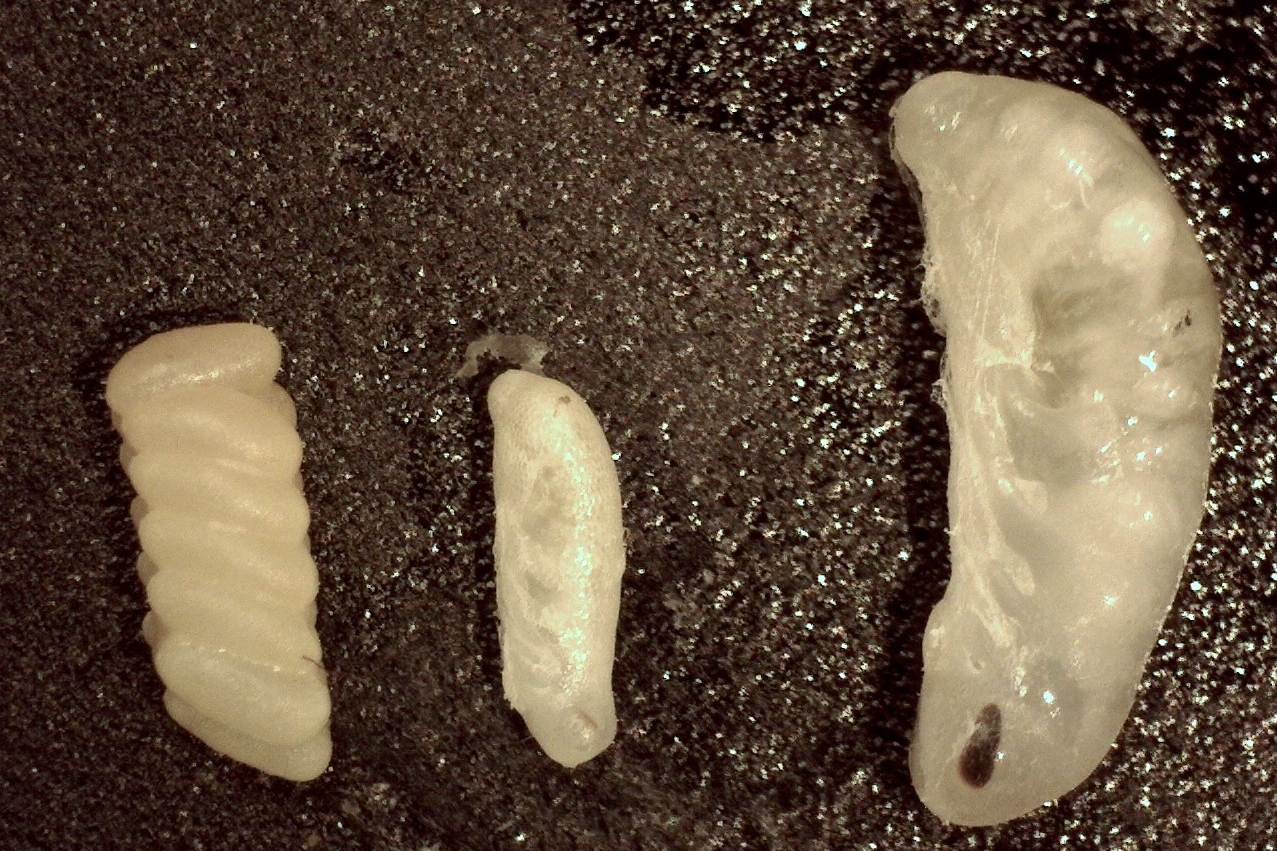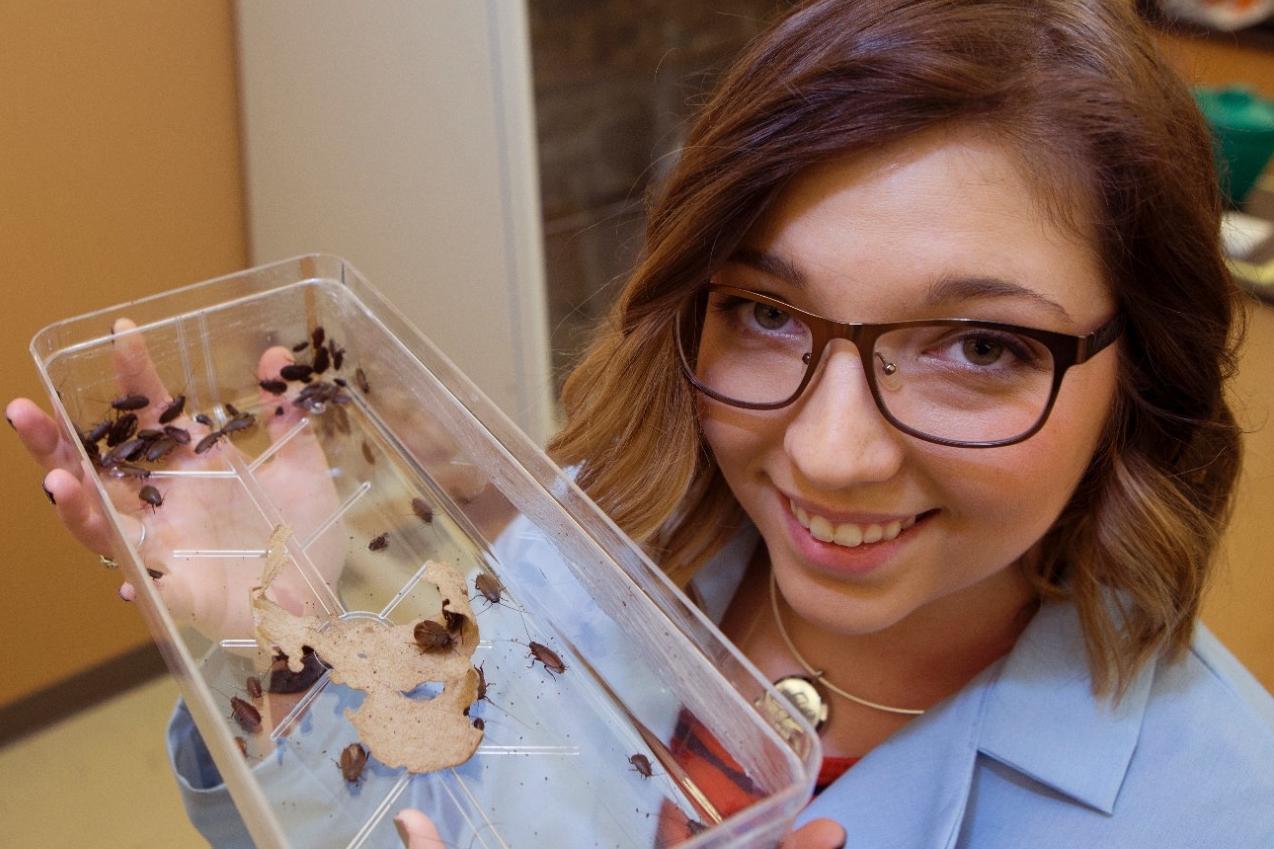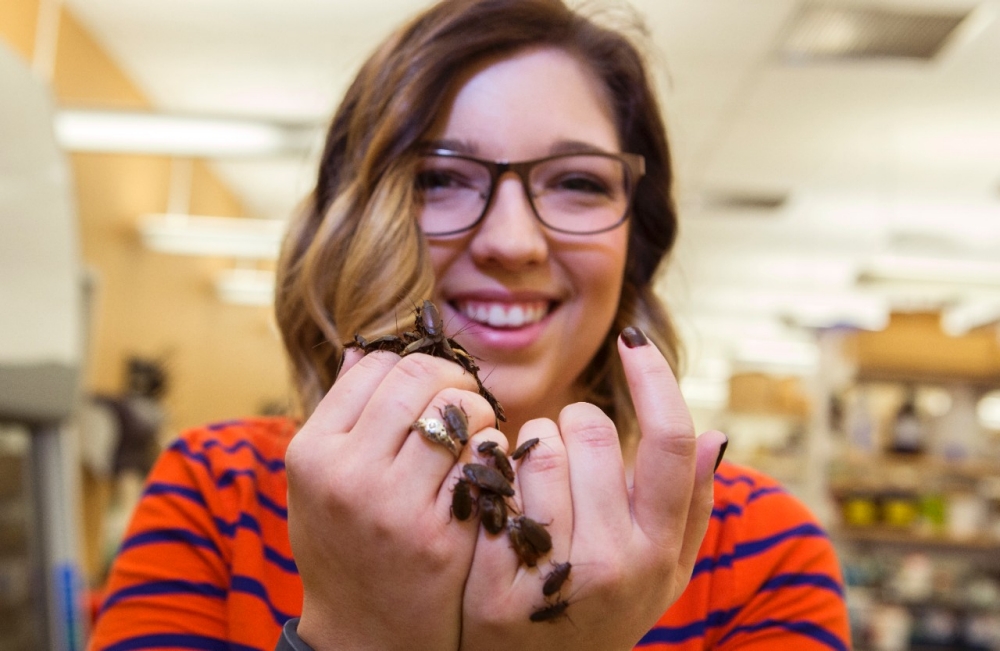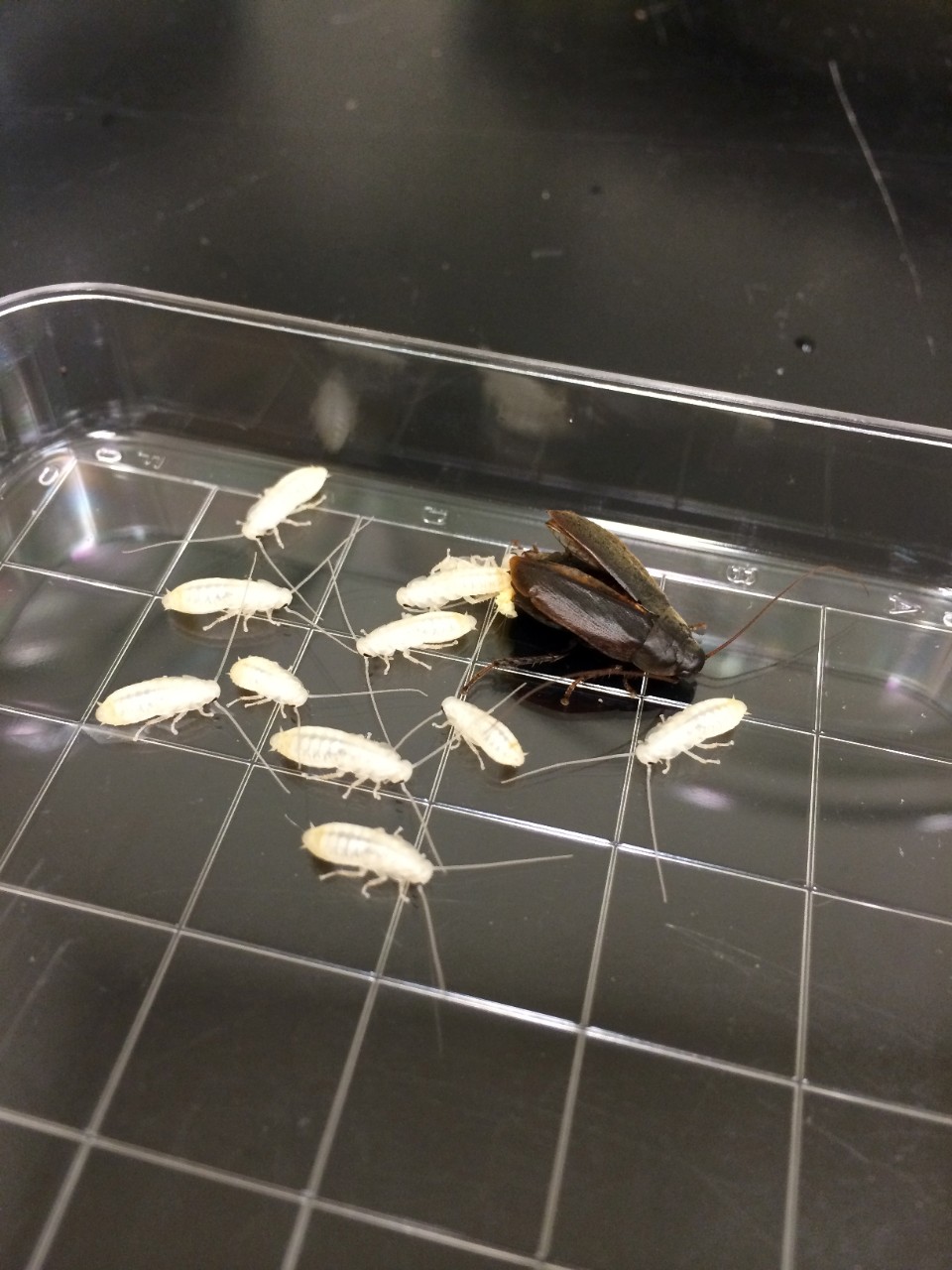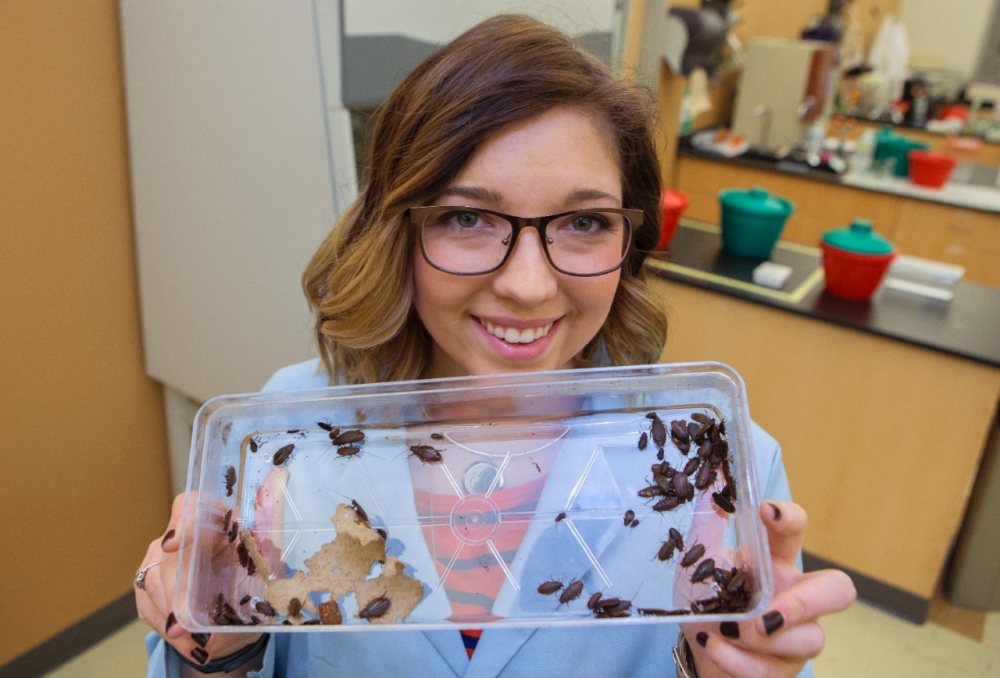by Dawn Fuller
(513) 556-1823
Photos by Emily Jennings and Joseph Fuqua II
Jan. 5, 2016
The sequencing of the first genome involving a cockroach species may one day serve as a model system comparable to how research on mice can apply to humans. In this case, the model could hold new revelations about how stress during pregnancy could affect both the mother and her offspring. Emily Jennings, a University of Cincinnati doctoral student in the Department of Biological Sciences, will present a study using RNA-sequencing analysis on a pregnant insect at the annual national meeting of the Society for Integrative and Comparative Biology. The meeting takes place Jan. 3-7, in Portland, Oregon.
The subject of the research does not involve the cockroach that sends us running for the bug spray when we find it in our home. The beetle mimic cockroach, Diploptera punctata, is much smaller and is not considered a pest around human habitats. Native to the Polynesian Islands, it primarily dwells in tropical forests. This is the first study of its kind to be performed on this particular insect.
The study involved extracting Ribonucleic acid or RNA — found in the cells of all living organisms — to develop a transcriptome, the gene readouts in a cell, to examine what occurs during the different developmental stages of the cockroach pregnancy and to explore if those changes hold wider applications for other mammals. The four stages of the reproductive cycle included mated but not pregnant; pre-lactation pregnancy; early lactation pregnancy and late lactation pregnancy, along with a male-female comparison that revealed unique expressed genes corresponding to each stage.

